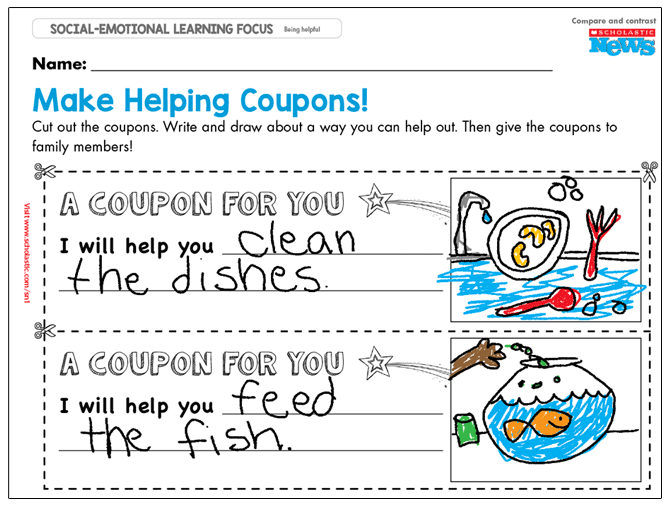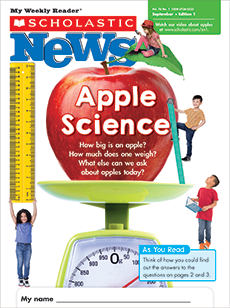Can I Help? Lesson Plan
Academic Standards
Reading Objective:
Children will identify ways to help out at school and at home.
Social-Emotional Learning Focus:
Being helpful
CCSS:
SL.1.2 Discuss a video; RI.1.1 Key details; L.1.1.A Capital letters; RI.1.3 Compare/contrast; RI.1.10 Read and discuss first-grade texts; L.1.1 Conventions of English when writing
- Before watching the video Kids Take Care, ask children what kinds of jobs they do at home. For instance, they may help set the table, or help clear it.
- After watching, ask kids if they help out at home in any of the ways they saw in the video. Is there a job they saw that they’d like to try? (SKILL: SL.1.2 Discuss a video)
- Play the vocabulary slideshow. This issue’s featured words are tidy and recycle.
- Read the issue together.
- Then project and discuss the reading checkpoint skill sheet. Later, children can fill in their own copies. (SKILL: RI.1.1 Key details)
With this game, children choose the right letter to finish cvc words
- With this skill sheet, kids circle the letters that should be capitalized in different sentences. When they put all the letters together, they’ll make a surprise word: helper! (SKILL: L.1.1.A Capital letters)
- Connect two issues with this special skill sheet. Use it after children have read Thank You, Community Workers! and Can I Help? They can draw inspiration from the issues to compare and contrast. (SKILL: RI.1.3 Compare/contrast)

Objective: Children build social-emotional learning skills by helping out their family members.
Materials: skill sheet, pencils, markers
- Pass out the skill sheets and have kids cut out the coupons. Spark ideas by brainstorming ways children can help out at home. You can start with examples from the issue. For instance, children might write a coupon saying I will help you tidy up or I will help you recycle. Other examples might be I will help you with the laundry or I will help you take out the garbage. Let children draw a picture to go with their sentence.
- If doing the activity at school, send kids home with their coupons to give to family members.
- If doing the activity at home, you might challenge your child to make a coupon for each member of the household! You don’t need a printer to do the activity—children can easily create their own coupons on construction paper, plain paper, or scrap paper. (SKILLS: Showing care for others; L.1.1 Conventions of English when writing)
